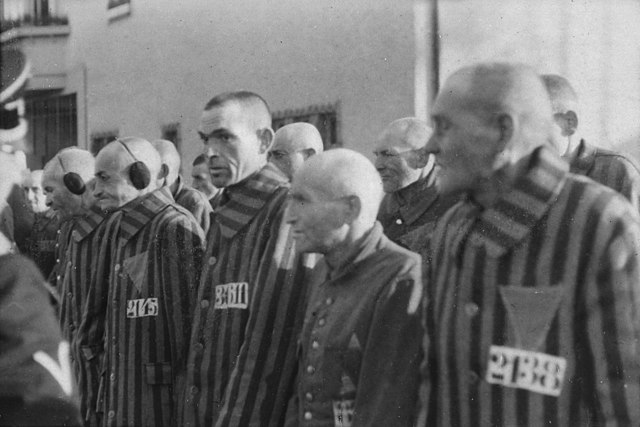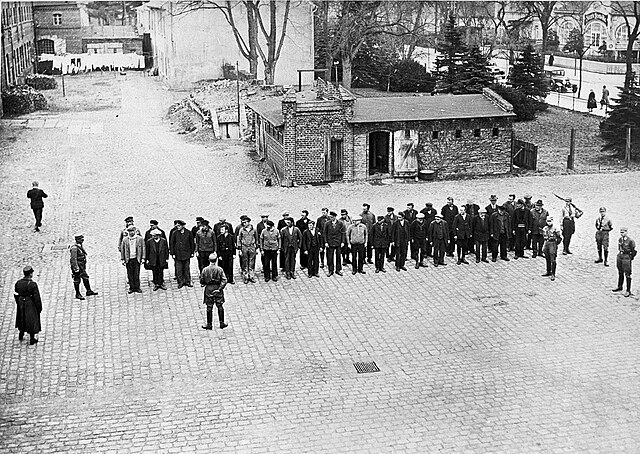Nazi concentration camp badge
Nazi concentration camp badges, primarily triangles, were part of the system of identification in German camps. They were used in the concentration camps in the German-occupied countries to identify the reason the prisoners had been placed there. The triangles were made of fabric and were sewn on jackets and trousers of the prisoners. These mandatory badges of shame had specific meanings indicated by their colour and shape. Such emblems helped guards assign tasks to the detainees. For example, a guard at a glance could see if someone was a convicted criminal and thus likely of a tough temperament suitable for kapo duty.
Single-triangle badges in various colors visible on Sachsenhausen concentration camp detainees
Single-triangles visible on Sachsenhausen detainees
Specimen indicating a Jehovah's Witness
Red emblems of a political enemy on a Dachau detainee's clothing.^
From 1933 to 1945, Nazi Germany operated more than a thousand concentration camps, including subcamps on its own territory and in parts of German-occupied Europe.
Prisoners guarded by SA men line up in the yard of Oranienburg, 6 April 1933
Heinrich Himmler inspects Dachau on 8 May 1936.
Prisoners at Sachsenhausen, 19 December 1938
Forced labor at Sachsenhausen brickworks







